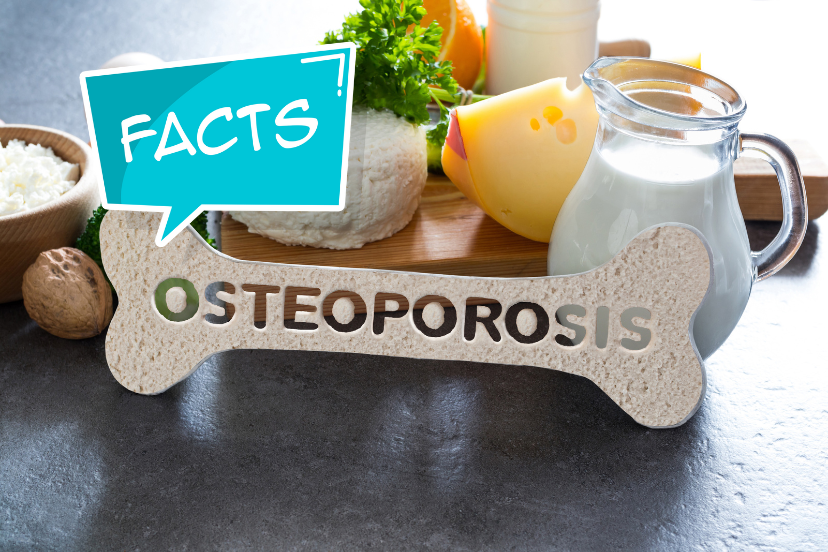Facts About Osteoporosis: Unveiling the Silent Disease
Osteoporosis, often dubbed the “silent disease,” stealthily weakens bones, leaving them brittle and prone to fractures. While it may not announce its presence with blaring symptoms, its impact can be life-altering. In this comprehensive article, we delve into the facts about osteoporosis, exploring its prevalence, risk factors, diagnosis, and treatment. Whether you’re a curious reader or someone seeking answers, let’s uncover the hidden truths behind this bone-related condition. Let’s get into, facts about osteoporosis!
1. What Is Osteoporosis?
Osteoporosis is a bone disease characterized by reduced bone mass, compromising bone quality and strength. Imagine your bones as architectural structures—when osteoporosis strikes, it’s like the scaffolding weakening, making the entire building vulnerable. The two main layers of bone tissue, cancellous and compact, suffer. Cancellous tissue resembles a sponge, riddled with holes, while compact bone forms a protective outer layer. Over time, osteoporosis enlarges the holes in cancellous tissue and thins the compact bone, rendering the entire structure fragile.
2. Who Does Osteoporosis Affect?
Osteoporosis doesn’t discriminate—it affects both men and women, although women are four times more likely to experience it. Age plays a pivotal role; after reaching peak bone strength around age 25, our bodies gradually lose the battle between bone breakdown and formation. By age 50, bone breakdown accelerates, leading to weakened bones. But here’s the kicker: osteoporosis isn’t exclusive to the elderly. Approximately 10 million Americans have been diagnosed with osteoporosis, and an additional 43 million are at risk due to low bone mass.
3. Risk Factors
Several factors increase the odds of developing osteoporosis:
- Advanced Age: As the clock ticks, so does the risk of osteoporosis.
- Gender: Women face a higher risk, especially during menopause when estrogen levels drop.
- Smoking: Lighting up accelerates bone loss.
- Alcohol: Excessive consumption weakens bones.
- Physical Inactivity: Sedentary lifestyles contribute to bone deterioration.
- Low Hormone Levels: Reduced estrogen (in women) or testosterone (in men) spells trouble.
- Genetics: Family history matters.
- Nutrition: Inadequate calcium and vitamin D intake harm bone health.
4. Diagnosis and Screening
Detecting osteoporosis involves bone density tests, such as dual-energy X-ray absorptiometry (DXA). These painless scans measure bone mineral density, revealing whether your bones are robust or fragile. Early diagnosis empowers you to take preventive measures and minimize fracture risk.
5. FAQs About Osteoporosis
1. Can I Reverse Osteopenia?
Absolutely! Osteopenia, a precursor to osteoporosis, signals early bone loss. Engage in weight-bearing exercises and tweak your diet to halt its progression.
2. What Bones Are Most Vulnerable?
Hips, wrists, and vertebrae—these are the prime targets for osteoporosis-related fractures. Even mundane activities like bending over or sneezing can lead to fractures.
3. Is Osteoporosis Life-Threatening?
While osteoporosis itself isn’t lethal, fractures caused by weakened bones can significantly impact mobility and independence. Over time, this can affect overall health and longevity.
.: How Can I Prevent Osteoporosis?
- Stay Active: Exercise regularly, especially weight-bearing activities.
- Nourish Your Bones: Consume calcium-rich foods and get enough vitamin D.
- Kick Bad Habits: Quit smoking and limit alcohol intake.
- Screening Matters: Regular bone density tests help catch osteoporosis early.
5. Is Osteoporosis Treatable?
Yes! Treatment includes lifestyle changes, medications, and fall prevention strategies.
6. What are the telltale signs of osteoporosis, and how can one recognize them before fractures occur?
Osteoporosis often manifests without overt symptoms until fractures occur. However, potential signs include loss of height over time, stooped posture, back pain, and fractures resulting from minor impacts.
Conclusion
Osteoporosis may be silent, but our voices can raise awareness about the facts about osteoporosis. By understanding its nuances, we empower ourselves and others to build stronger bones, one fact at a time. So, let’s keep the conversation going—because knowledge is the best armor against this stealthy foe. Remember, your bones deserve the spotlight, even if osteoporosis prefers the shadows.




